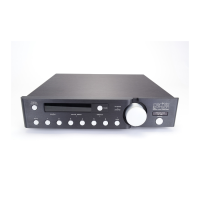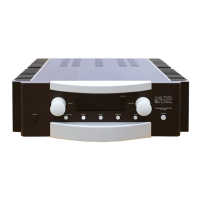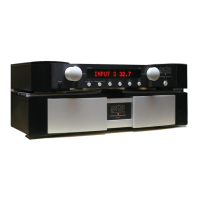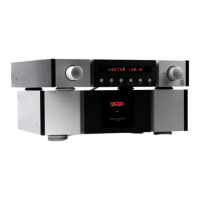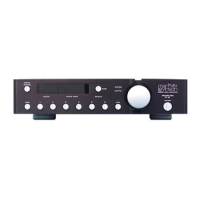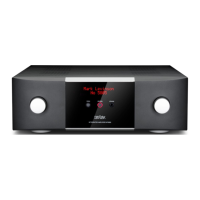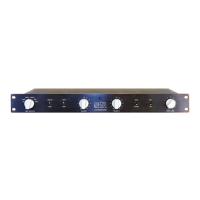Do you have a question about the Mark Levinson 38S and is the answer not in the manual?
Safety warnings and cautions for reducing risk of fire or electric shock.
Equipment tested and found to comply with FCC rules for digital devices.
List of 15 safety precautions for operating the preamplifier.
Instructions for unpacking the preamplifier and its accessories.
Guide to installing batteries in the remote control.
Recommendations for placing the unit and ensuring proper ventilation.
Important safety note regarding system grounding.
Information on factory voltage settings and how to verify.
Details on the power requirements and AC mains line.
Step-by-step guide to get the Nº38S up and running quickly.
Controls display brightness and linked components.
Shows operational status and information.
LEDs indicating the current Operational Mode.
Cycles through Monitor, Record Select, and Balance modes.
Indicates inverted polarity of the output signal.
Adjusts listening volume and channel balance.
Toggles between Stereo and Mono operation.
Selects audio inputs for Monitor or Record modes.
Reduces main output level temporarily.
Toggles the unit between operation and Standby mode.
Connects to power amplifier balanced inputs for optimal performance.
Using balanced Y-adaptors for multiple outputs.
Connects to power amplifier single-ended inputs.
Accepts balanced signals from source equipment.
Connects to tape inputs of a recorder.
Ports for linking compatible Mark Levinson components.
Instructions for creating an RJ-45 Link cable.
Connecting the power amplifier's Link port.
Accepts single-ended inputs from line-level sources.
Connecting a turntable via a phono preamp.
Input for infrared repeater control.
Toggles between Stereo and Mono operation.
Controls display brightness and Standby mode.
Remotely selects the six inputs of the Nº38S.
Adjusts listening volume.
Inverts the output polarity of the Nº38S.
Cycles through operational modes.
Temporarily reduces output level.
Details on RCA and XLR connectors and recommended cables.
Connecting the AC power cord and initial system startup.
List of alternative names for the six inputs.
Special alias for connecting an equalizer.
Steps to rename input aliases.
Associating Record Outputs with specific inputs.
Notes on noise from specific test conditions.
Matching output levels of different sources.
Remembering a preferred volume level for each input.
Defining the output level reduction for the Mute function.
Setting a maximum volume limit for the preamplifier.
Setting the preamplifier to go into standby automatically.
How the system exits set-up modes if inactive.
Standard mode for listening to sources.
Mode for selecting sources for recording.
Fine control over relative Left/Right channel volumes.
Using balance control for accurate sound-staging.
Why surround processors should not follow the preamp.
Why surround processors should not precede the preamp.
Why surround processors should not be in a tape loop.
How the Nº38S integrates with surround processors.
Diagram showing connection with a surround sound processor.
Constructing an adaptor to break ground loops.
Synchronizes display brightness across linked components.
Links the Nº38S to other components' Standby status.
Links input selection between components.
Prevents accidental interruption of digital recording.
Instructions for cleaning the preamplifier's cabinet.
Details on 90-day and five-year limited warranties.
How to obtain service and necessary documentation.
Detailed technical measurements of the Nº38S.
Diagrams showing top and side views with measurements.
| Type | Preamplifier |
|---|---|
| Number of Channels | 2 |
| Weight | 25 lbs |
| Frequency Response | 20 Hz - 20 kHz |
| Signal-to-Noise Ratio | > 100 dB |
| Maximum input voltage | 10V RMS |
| Maximum output voltage | 10V RMS |
| Inputs | RCA |
| Outputs | RCA |
| Input impedance | 100k ohms |
